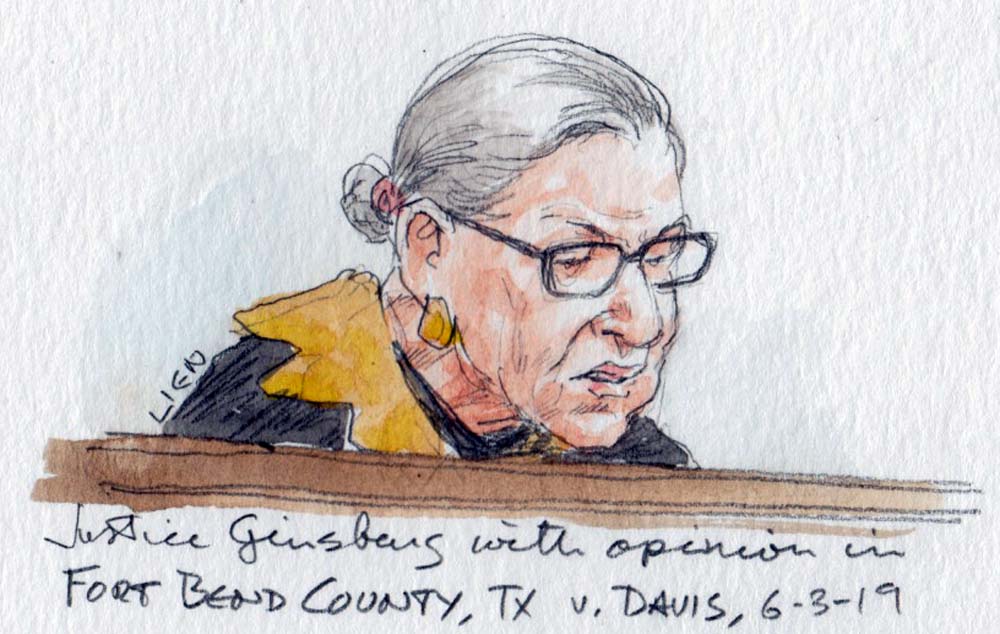Symposium: Ginsburgs equal-protection legacy and the dismantling of sex-based stereotypes

This article is part of a symposium on the jurisprudence of the late Justice Ruth Bader Ginsburg.
Elizabeth Slattery is a senior legal fellow and Anastasia Boden is a senior attorney at Pacific Legal Foundation. Theyre the hosts of a new podcast, Dissed, about dissenting opinions at the Supreme Court.
Throughout her pathmaking career, Ruth Bader Ginsburg fought for women to be treated equally, whether that meant eliminating a hardship or getting rid of a special privilege. Arguing before the Supreme Court in January of 1973, she channeled the feminist and abolitionist Sarah Moore Grimk, declaring, I ask no favor for my sex. All I ask of our brethren is that they take their feet off our necks. Ginsburg believed that the pedestal upon which women have been placed is, in fact, a cage. Ginsburg simply wanted women to have an equal chance to realize their individual potential.
Ginsburg was the definition of a trailblazer one of nine women in a class of 500 at Harvard Law School, one of the first female tenure-track law professors in the country, and just the second woman to serve on the Supreme Court. She showed the world that women can have it all she once told her childrens school to call their father. She lived by example, creating for herself an equal partnership, a fulfilling career and a loving family.
As an advocate, Ginsburg devised a strategy to smash gender stereotypes by attacking sex-based laws that purportedly benefited women. She recognized that any law that requires the sexes to be treated differently, whether nefarious or purportedly benign, should be looked at with a dose of skepticism. InDuren v. Missouri, she challenged a law that allowed women, but not men, to opt out of jury duty. The law was meant to accommodate the fact that women were primarily responsible for child-rearing at that time, and thus required an exemption. Ginsburg argued that if the state wanted to create an exemption for caregivers, it should do so on an equal basis. Enshrining a sex-based classification into law, however, reflect[s] and perpetuate[s] a certain way of thinking about women.
Success came in Frontiero v. Richardson, when Ginsburg attacked a policy that unequally provided housing and medical benefits to military spouses. While female service members had to prove their husbands were dependents, the wives of male service members were automatically awarded benefits. She decried the law as reflecting antiquarian attitudes of man as provider, man as protector, man as guardian of female morality. But in Kahn v. Shevin, Ginsburg unsuccessfully challenged a state law that gave a property tax exemption to widows but not widowers. She argued that giving women special benefits stem[s] from stereotypical notions about their proper role in society. The Supreme Court ruled against her, finding that the law did not violate equal protection because the states determination that women face more financial hardships than men after the death of a spouse was not arbitrary.
InCraig v. Boren, Ginsburg wrote a scathing brief attacking a state law that granted a lower drinking age to women. She observed that although the law appeared to afford women a liberty not afforded to men, in actuality, it pigeonholed both sexes. By assuming that women drink less, drive less and commit fewer alcohol-related crimes than men, it created an artificial barrier[] to full realization by men and women of their human potential, and retard[ed] progress toward equal opportunity, free from gender-based discrimination. She remarked that while laws like these may have been viewed as gallantry at one time, in hindsight, theyre a relic of Victorian condescension. In these cases and dozens of others throughout the 1970s, Ginsburg advanced the idea that women are a diverse group who can be breadwinners, wives or both, and that laws must not draw distinctions between men and women based on overbroad generalizations about their behavior, proclivities, and preferences.
On the bench, her most famous equal protection ruling was United States v. Virginia, holding that the state-run Virginia Military Institutes categorical exclusion of women violated the equal protection clause. She explained that government violates principles of equal protection when it denies to women, simply because they are women, full citizenship stature — equal opportunity to aspire, achieve, participate in and contribute to society based on their individual talents and capacities. She observed that differences between men and women are cause for celebration, but not for denigration of the members of either sex or for artificial constraints on an individuals opportunity. And classifications based on sex may not be used to create or perpetuate the legal, social, and economic inferiority of women.
Throughout her life, Ginsburg recognized that men and women are persons of equal dignity but they are not the same. She also acknowledged that women are not a homogenous, interchangeable group.For her, equality under the law makes people free to be you or me free to develop our own talents, whatever they may be, and not be held back by artificial barriers, as she explained in a 2012 interview. Equality protects our right to be considered something more than our immutable traits.
Asked when there will be enough women on the Supreme Court, Ginsburg once quipped, When there are nine. This so perfectly sums up her unwillingness to settle for the status quo, inspiring generations of women to reach for the stars. And thats a legacy worth preserving.
